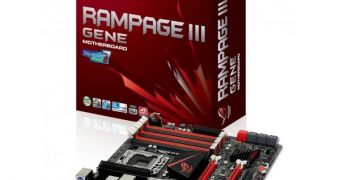It would appear that, while some IT market segments are having a rough time and seeing product prices declining more and more, others, like that of motherboards, are poised to experience the opposite.
End-users are most likely keeping their eyes and ears peeled for whatever happens at the ongoing CeBIT trade show in Hannover, Germany.
Still, even with all the new products on show (which really are much fewer than one may have expected), market watchers and analysts have had enough time to look into a few things.
For instance, LCDs are set to get more expensive while hard disk drives are set to sell less and less because of slates.
Even more recently, it was discovered that, contrary to all expectations, sales of graphics cards during 2010 turned out to be even lower than those of 2009.
Considering that 2009 was actually one of the years struck more seriously by the recession (2008 is the winner in that field), this is somewhat disappointing.
On the other hand, shipments of chips with integrated graphics and, by extension, mainboards for them have increased.
Intel even decided to start working on an all-in-on PC standard based on mini-ITX platforms, so as to lead to lower AiO prices.
With this to spur prices of such motherboards, and for other reasons, it appears that motherboards may start to get more expensive beginning this month.
MSI (Micro-Star International) is already said to have boosted the prices of its own such products by 5 to 10 percent on March 1, after ASUS and Gigabyte did something more or less similar as early as February.
Besides the possibility of more mainboards being ordered, the main reasons for this move on the companies' part are labor shortages and the rising costs of PCBs. Whether other outfits adopt the same tectic in remains to be seen.

 14 DAY TRIAL //
14 DAY TRIAL //